So basically I have a column in my spreadsheet that tracks the status of bearing conditions. 800+ bearings spread across 8 or so sheets (different areas of a facility) and will continue to increase in the future.
There is a corresponding column that tracks the date that the status last changed.
I have several active x controls and user forms on a dashboard/homepage for the work book that allow the user to make these changes automatically, however I would like to be able to go into the sheets and manually change the status (drop down list) and have the date in corresponding cell change automatically.
I found some code I modified and it appears to work which is good
Private Sub Worksheet_Change(ByVal Target As Excel.Range)
Dim xRg As Range, xCell As Range
On Error Resume Next
If (Target.Count = 1) Then
If (Not Application.Intersect(Target, Me.Range("G5:G80")) Is Nothing) Then _
Target.Offset(0, 1) = Date
Application.EnableEvents = False
Set xRg = Application.Intersect(Target.Dependents, Me.Range("G5:G80"))
If (Not xRg Is Nothing) Then
For Each xCell In xRg
xCell.Offset(0, 1) = Date
Next
End If
Application.EnableEvents = True
End If
End Sub
Having got the code working as I wanted I realised I would like it to to add the date to additional cells in that row but dependent on what the cell is changed to (for example if the cell is change to "Good" also add the current date in a cell offset by 4).
I have modified the code further and it now also adding the date too cells dependent on what the change value was.
Private Sub Worksheet_Change(ByVal Target As Excel.Range)
Dim xRg As Range, xCell As Range
Dim UpperIndex As Integer
Dim LowerIndex As Integer
Dim Rows As Integer
Set tbl = ThisWorkbook.Worksheets("Route 1").ListObjects("Route_1_Table")
Rows = tbl.Range.Rows.Count
UpperIndex = 5
LowerIndex = Rows - 3
On Error Resume Next
If (Target.Count = 1) Then
If (Not Application.Intersect(Target, Me.Range("G" & UpperIndex & ":G" & LowerIndex)) Is Nothing) Then _
Target.Offset(0, 1) = Date
If Target.Value = "Good" Then _
Target.Offset(0, 5) = Date
If Target.Value = "Pending Baseline" Then _
Target.Offset(0, 4) = Date
End If
End Sub
As you can see I removed the last section of the code but I don't know what it did, any ideas? Just wondering if it comes back to bite me later. Bit removed shown below
Application.EnableEvents = False
Set xRg = Application.Intersect(Target.Dependents, Me.Range("G5:G80"))
If (Not xRg Is Nothing) Then
For Each xCell In xRg
xCell.Offset(0, 1) = Date
Next
End If
Application.EnableEvents = True
